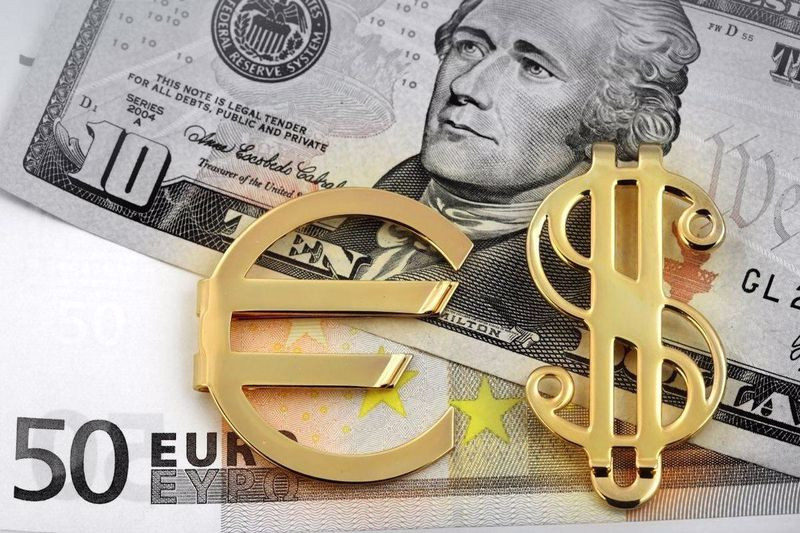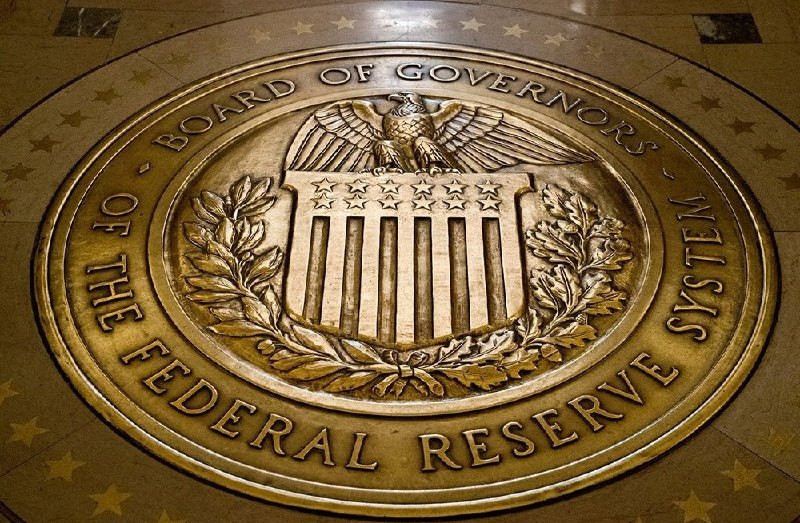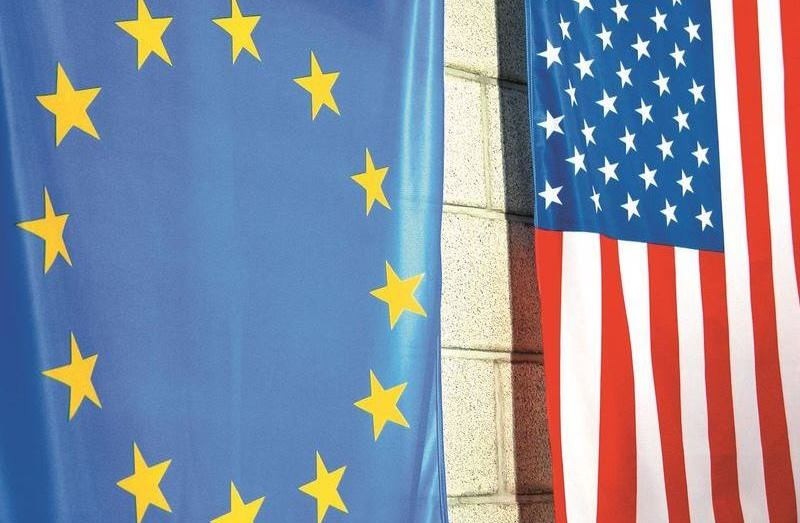
The data on US inflation published on Tuesday caught investors by surprise and knocked EUR/USD off its upward trajectory.
The main currency pair began to gain momentum from the middle of last week, as players began to look with optimism at the prospects for inflation in the United States, believing that its decline will contribute to softening the Federal Reserve's position.
Armed with this idea, traders cut short positions on the euro and sold the dollar.
In its latest Beige Book, the US central bank noted widespread signs of weakening economic activity and some degree of moderation in price growth in certain parts of the country.
Even more revealing was the evidence of weakening demand in the reports of the regional banks of the Fed.
This only strengthened investors in thinking about the past peak of inflation and the expected reversal of the Fed.
Market participants believed that the central banks' efforts are beginning to bear fruit after the results of the consumer survey for August, conducted by the Federal Reserve Bank of New York, published on Monday, indicated a decrease in inflation expectations.
Thus, the expectations of US consumers for inflation for one year fell to 5.7% in August from 6.2% in July. It is assumed that in three years inflation will be 2.8%, and in five years it will reach 2%.
It should be noted that reviews of inflation expectations are just opinions, and consumers can be wrong.
Nevertheless, there were hopes that the Fed would be less aggressive in its next monetary decision and would choose between raising rates by 50 and 75 basis points.
At the same time, Fed Chairman Jerome Powell and his colleagues said last week that they would raise rates as high as necessary and would keep them at this level for some time in order to reduce inflation to the target level of 2%.
In particular, Fed Vice Chair Lael Brainard said that the lesson from past outbreaks of inflation is obvious: don't delay raising rates too early.
The president of the Federal Reserve Bank of Boston, Susan Collins, in turn, said that the US central bank has not yet seen a significant decline in prices, and this is what it should strive for.
Meanwhile, the head of the Federal Reserve Bank of Cleveland, Loretta Mester, noted that she is concerned that higher inflation may have already begun, since the full effect of such things as rising prices for services and rents is being felt.
"I'm not even sure that inflation has not reached its peak yet," she said.

However, investors did not seem to hear the Fed officials.
But they liked the hawkish rhetoric of the European Central Bank, which went for a historic rate hike last week by 75 basis points, and also signaled a further increase in the cost of borrowing.
Thus, ECB representative Peter Kazimir said that the July and September rate hikes, as well as those that will follow in the near future, are a response from the ECB.
"The central bank's priority is to actively continue the normalization of monetary policy. Rigidity is necessary for price stability, for restoring balance in the economy," he said.
Another ECB representative, Klaas Knot, said that the ECB sent a strong signal to the markets by raising the rate by 75 basis points. Curbing the dynamics of inflation is the ECB's only concern, he added.
Another ECB official, Francois Villeroy de Galo, assured that the central bank's hands are completely free for the next political step.
"We decided to accelerate the normalization of monetary policy because inflation is too high, especially core inflation. Our will and ability to fulfill our mandate cannot be in any doubt," he said.
While the dollar tried in vain to find bulls, the euro received significant support due to a sharp increase in the ECB rate and the accompanying hawkish comments of a number of officials.
Last week, the EUR/USD pair managed to bounce by more than 200 points from the twenty-year lows recorded earlier in the 0.9870 area. It finished the last five days in the area of 1.0080.
The main currency pair tried to develop success at the beginning of the week. On Monday, it added 0.4% to its previous gains and reached an almost one-month high in the 1.0198 zone.
On Tuesday, the EUR/USD bulls went for another attack on the 1.0200 mark and were determined to reach new frontiers.
However, all the cards were confused by unexpectedly high US inflation figures, which were published a week before the next FOMC meeting.

Consumer prices in the United States excluding the cost of food and energy in August increased by 6.3% year-on-year and 0.6% month-on-month. Experts expected an increase of 6.1% and 0.3%, respectively.
"There was a feeling that inflation had slowed down, but the data show how persistent it is, and this requires the Fed to raise rates more decisively. The central bank still has a lot to do, and now there is an understanding that the peak rate will be higher than 4%," said strategists at Principal Global Investors.
The August data confirmed the opinion of the majority of Fed officials that inflationary pressure remains high and widespread in the economy, and in order for consumer prices to return to the 2% target, it is necessary to continue raising rates at an accelerated pace.
"Fed officials have made it clear that they will not slow down the pace of rate hikes until they see convincing evidence that underlying inflationary pressures are easing. The latest data means that the probability of a 50 basis point rate hike next week has disappeared," Pantheon Macroeconomics analysts said.
Money markets now fully take into account in quotes the Fed's increase in the key rate at the next meeting by at least 75 basis points and estimate at 25% the probability of a rate hike by a whole percentage point.
The prospect of further aggressive rate increases in the US spurred the dollar and put pressure on the EUR/USD pair.
Following the results of trading on Tuesday, the euro fell in price against its US counterpart by 1.5% and finished around $0.9970, sharply retreating from the session high of $1.0185.
"Evidence that core inflation in America has accelerated has thwarted the euro's attempt to strengthen against the dollar. The growth potential of the single currency remains limited, as the Fed maintains a tight policy, and this is unlikely to change, given that inflation in the United States exceeded forecasts in August," UniCredit analysts noted.
The August inflation report in the US easily exceeded expectations, which strengthens the arguments in favor of positive forecasts for the dollar in the near future, economists at Credit Suisse say.
"If we look at the near future, the balance of risks has changed from hopes about a possible weak consumer price index in the US to thinking about whether the Fed will raise the rate by 100 bps at the FOMC meeting on September 20-21. Under these conditions, the path of least resistance for the greenback is to continue to grow. At least, until the Fed's rate increase by 100 bps is included in the quotes by at least 50%. We see no reason in the short term to change our forecast for EUR/USD and expect that the pair will reach 0.9700 by the end of the third quarter," they said.

TD Securities strategists believe that for now the main currency pair should remain below parity.
"We expect parity to provide support, but the euro is in such an unfavorable fundamental position with a collapsing balance of payments and a slowing global growth cycle that we believe that falling below parity is the way forward (we have outlined $0.96 at the end of the year)," they said.
Rabobank believes that the dollar will enjoy good support over the next few months, as the hawkish position of the Fed ensures the greenback's appeal as a safe haven.
"Since the Fed still has a lot of work to do to tame price pressure and ensure reliable fixation of inflation expectations in the medium term, it can be assumed that the FOMC is not yet ready to abandon its hawkish position. Since this will affect risky assets, we note the likelihood that the strength of the dollar will continue at the beginning of next year," the bank's analysts said.
"Considering also that the eurozone is facing a difficult winter, including the possibility of energy rationing for some companies, we see opportunities for a further fall in the EUR/USD exchange rate below parity," they added.
The greenback already somewhat loosened its grip on Wednesday, which the single currency did not fail to take advantage of.
The EUR/USD pair gathered its strength at the beginning of the European session and managed to win back some of its recent losses.
However, touching the local high in the area of 1.0020, it rolled back to the area below parity.
The EUR/USD pair lost its upward momentum after Eurostat reported that industrial production in the eurozone decreased by 2.3% in July compared to the previous month, which was the largest decline since April 2020. At the same time, experts expected the indicator to fall by only 1%.
Meanwhile, the statistical data published on the other side of the Atlantic allowed the greenback to maintain stability in relation to its European competitor.
Thus, in August, the basic producer price index in the United States decreased in annual terms to 7.3% from 7.7% in July. On a monthly basis, the indicator expanded by 0.4% after rising by 0.3% in the previous month.
Despite the slowdown in annual growth rates, the increase in the base PPI index in monthly terms gives little reason to expect a softening of the Fed's position.
Producer prices are a leading indicator compared to consumer inflation, and they hint at a further expansion of the inflationary spiral, which sets the Fed up for a longer fight against inflation.
The EUR/USD pair's pullback from the 1.0180-1.0200 area indicates that the recent recovery has exhausted itself. Subsequent short positions below 0.9955-0.9950 will confirm the negative mood and open the way to additional losses. In this case, the pair may accelerate its decline to 0.9900, and then fall back to the 20-year lows reached earlier this month near 0.9870.
On the other hand, the resistance at 1.0080 now seems to limit the growth. Next are the round 1.0100 level and the 50-day moving average at 1.0125. A steady breakthrough of the last mark may provoke a short squeeze and allow the bulls to return to conquering the 1.0200 mark. If this momentum develops, then the next significant obstacle will arise in the area of 1.0265-1.0270 on the way to the level of 1.0300.





















